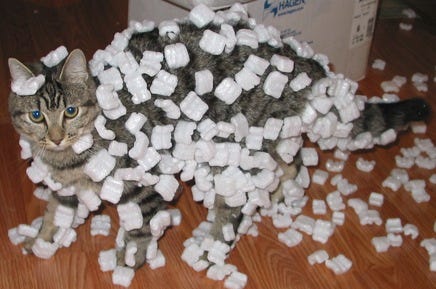Understanding Static Shocks: The Science Behind the Zaps
Written on
Chapter 1: The Experience of Static Shocks
During my high school years, there was a staff member who consistently shocked me with static electricity. It wasn't intentional, but every time I approached her to receive my lunch, I would feel that familiar jolt—zap! This sensation was never pleasant, and it was even worse knowing it was coming.
With a deeper understanding of science now, I believe I have pinpointed the source: those synthetic floors in the cafeteria. As I walked in my rubber-soled shoes across the plastic surface, I was accumulating an electric charge. Then, when I reached out to take my plate from her (who, by the way, wore a prominent gold wedding band), bam! The shock would happen, and I realize now that this was particularly common during the winter months.

Chapter 2: The Science of Charges
Now, what exactly causes this phenomenon? How was I accumulating electric charge simply by walking across a synthetic floor?
The answer lies in the triboelectric effect. This occurs when two non-conductive materials, such as plastic and rubber, come into contact and rub against each other. This friction results in a transfer of electrons, leading to a buildup of negative charge on one material and a positive charge on the other. Because these materials are insulators, they retain this charge rather than allowing it to dissipate, unlike conductive materials such as metals.
The first video titled "Avoid electric shock getting out of a car!" discusses practical tips to prevent electric shocks, especially when transitioning from one environment to another.
Like charges repel each other, while opposite charges attract. When you find yourself charged, you might feel a slight shock as the electrons move from one object to another, such as from your body to a metal surface. This movement of electrons creates a small electric current, which is what you experience as a shock.

Chapter 3: The Role of Environment
If you frequently receive shocks from someone, it might be because there’s actual electricity flowing between you. Who said science couldn’t be romantic?
During dry conditions, such as in winter, static charges tend to accumulate more readily. This is because higher humidity levels allow moisture in the air to act as a conductor, helping dissipate charges instead of allowing them to build up.
The second video titled "What causes static shock, and why is it worse in winter?" delves into the environmental factors influencing static electricity and practical advice for managing it.
When charged particles transfer from one material to another, they can ionize the air in between, releasing energy in the process. This energy manifests as an electric shock, along with heat and light.
In a larger context, this same static electricity can lead to phenomena such as lightning. Within clouds, static charges can build up to significant levels, leading to discharges that we perceive as lightning strikes. The rapid expansion of heated air during these discharges creates the thunder we hear.

Chapter 4: Tips to Prevent Static Shock
To minimize the chances of getting zapped, consider increasing the humidity in your environment, wearing cotton fabrics that are less likely to retain charge, and regularly discharging yourself by touching a metal object.
Happy zapping—if you must!
Want to learn more about me and my writing? Check out the link below:
Who I am and what I enjoy writing about (plus a disclaimer for my stories — yawn!)
Ah, I see you have stumbled upon my profile page — lovely to meet you!